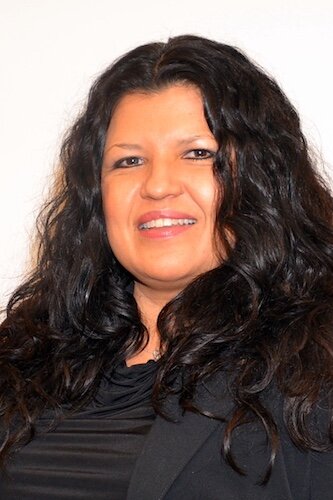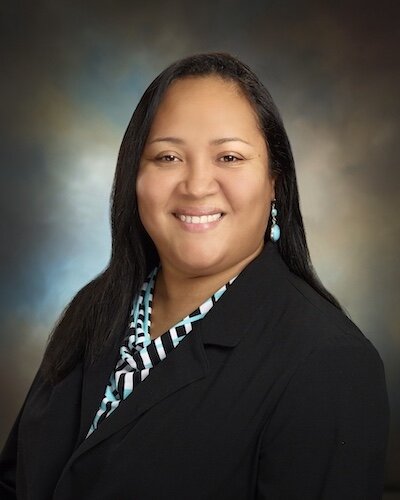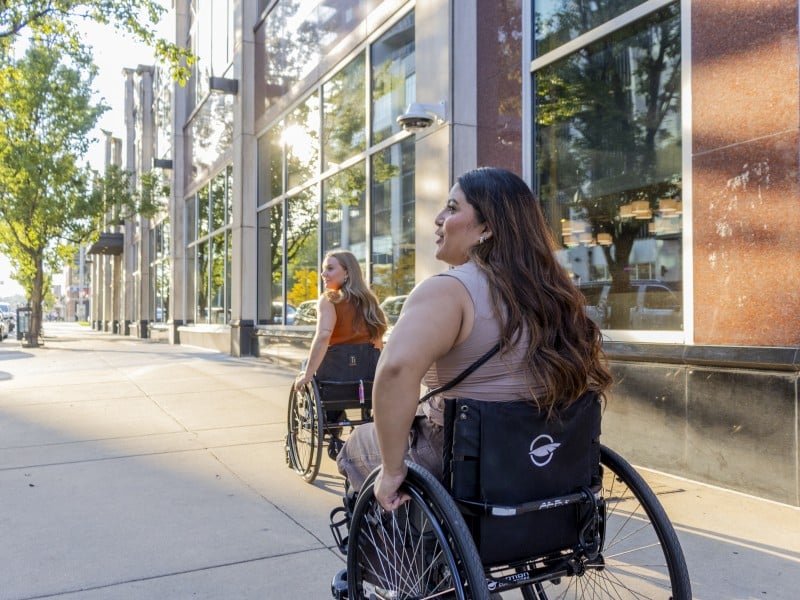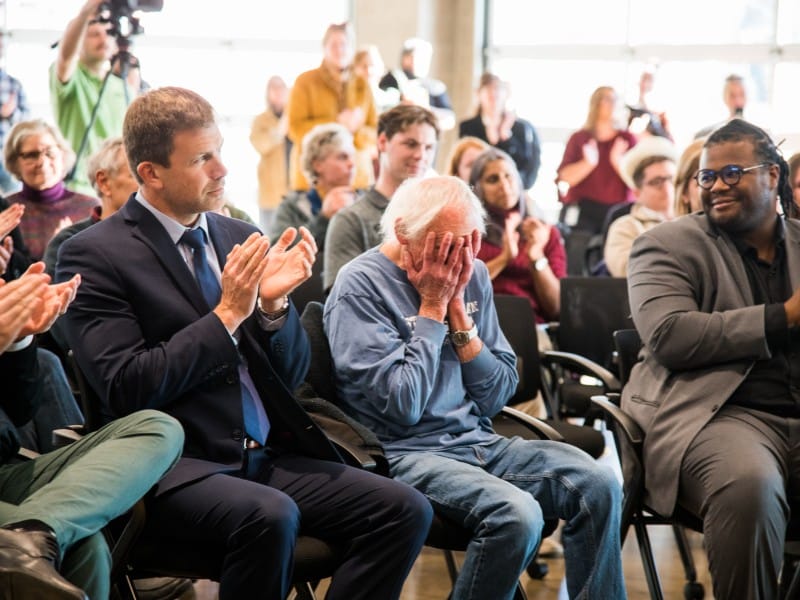As Native American women go missing and are murdered, who is keeping track?
In 2019, more than 5,590 Native American women were reported missing. Murder is the third-leading cause of death for them. Yet there is still no single database that tracks the number of Native women who go missing or are murdered every year.
Editor’s note: This story is part of Southwest Michigan Second Wave’s On the Ground Calhoun County series.
In 2019, more than 5,590 Native American women were reported missing. Murder is the third-leading cause of death for them. Yet there is still no single database that tracks the number of Native women who go missing or are murdered every year, says Elizabeth Cook, Senior Staff Attorney for the Nottawaseppi Huron Band of the Potawatomi.
Those federal agencies that collect data as it relates to Missing, Murdered Indigenous Women and people “don’t keep track of nationality and if they’re Native American they have been miscategorized as non-white or white and no one really knows,” Cook says. “The information they do find is inaccurate for the most part and oftentimes based on memory, not actual facts.”
Cook cites a report by the Urban Indian Health Institute (UIHI), a tribal epidemiology center based in Seattle, Wash., which says that in 2016 the National Crime Information Center reported that there were 5,712 reports of missing American Indian and Alaska Native women and girls, though the U.S. Department of Justice’s federal missing persons database, NamUs, logged only 116 cases.
“The Center for Disease Control and Prevention has reported that murder is the third-leading cause of death among American Indian and Alaska Native women and that rates of violence on reservations can be up to ten times higher than the national average,” the report says. “However, no research has been done on rates of such violence among American Indian and Alaska Native women living in urban areas despite the fact that approximately 71% of American Indian and Alaska Natives live in urban areas.”
Cook says she has not seen any recent statistics for the State of Michigan but has heard enough anecdotally to know there’s a problem.
“I know there’s a big problem with sex trafficking in Michigan and we have an international border, so I do know there are issues with women becoming missing because it’s easier to get in and out of Canada,” she says.
In 2017, the UIHI began a study aimed at assessing the number and dynamics of cases of missing and murdered American Indian and Alaska Native women and girls in cities across the United States. Using FOIA (Freedom of information Act) requests, UIHI requested all case data from 1900 to the present.
“No agency was able to provide data dating to 1900. The oldest case UIHI identified happened in 1943, but approximately two-thirds of the cases in UIHI’s data are from 2010 to 2018,” the report says. “This suggests the actual number of urban MMIWG (Missing, Murdered Indigenous Women) cases are much higher than what UIHI was able to identify in this study.”
“As an Indian woman I would just say that it’s a travesty. It’s terrible how the United States government has kept lots of things from Native people,” Cook says. “We make up 0.2 percent, we are such a small part of the population, but we are overrepresented in it for alcoholism, victimization, murder rates and homelessness. It’s really sad.”
Despite her shock and disbelief about the way MMIW cases have been mishandled and misreported, Cook says she is encouraged by the formation of a new unit within the Bureau of Indian Affairs that will provide leadership and direction for cross-departmental and interagency work involving missing and murdered American Indians and Alaska Natives. The formation of the MMU (Murdered and Missing Unit) was announced in April by U.S. Secretary of the Interior Deb Haaland, the first Native American to serve as a cabinet secretary.
“Violence against Indigenous peoples is a crisis that has been underfunded for decades. Far too often, murders and missing persons cases in Indian country go unsolved and unaddressed, leaving families and communities devastated,” Secretary Haaland said in a press release announcing the MMU.
Cook says Haaland’s creation of the Murdered and Missing Unit is “kind of like a light and something to look forward to. There are thousands of these cases nationwide, but nobody knows and nobody seems to care. The federal government isn’t even keeping track. There’s nothing out there for our people to be able to say, ‘Hey, look at what’s happening to our women and girls.’ Nobody’s keeping track of Native women.”
How They Go Missing and Murdered
While living and working in Canada as a counselor, Nancy Smit, NHBP Tribal Council Secretary, says she began to hear about incidences of Native women and girls who seemingly disappeared without a trace. She ties this back to a system that was set up to fail them.
Smit was working for a church-based organization that provided after school tutoring and other programs for the children in tribes living in close proximity.
“They were impacted by a residential school system as we have been here in the United States, but in Canada it was more aggressive where officials came into communities and under their police law they would just take the kids and force them to go to school and learn the dominant language,” Smit says. “They were living in the dominant culture and being forced to speak English.”
While living in these residential school settings, Native children endured physical and emotional abuse and some died at the hands of those who forcibly removed them from their families and were charged with taking care of them.
In May, reports began circulating about the discovery of a mass grave containing the remains of more than 700 Native children on the grounds of a former residential school in Kamloops, British Columbia.
“There were all types of abuses of these kids. They were isolated and it was traumatizing because these kids were being forced to abandon their culture and take on another culture,” Smit says.
Closer to home, researchers with the Saginaw Chippewa Indian Tribe of Michigan publicly announced in July that they had uncovered records confirming the deaths of 227 Native children who had attended the Mount Pleasant Indian Industrial Boarding School operated in Mount Pleasant between its opening in 1893 and its closure in 1934. The federal government documented only five deaths during this same time period.
Smit says some of the children attending residential schools ran away, either to the nearest big city or back to their reservations.
“When they went back to their reservations, they realized they couldn’t speak their native language anymore,” Smit says. “To be a Native woman or girl in the big city was to be exploited. When I lived in Canada, I actually met women who had come into the city to go to a county fair where they would meet a pimp who wined them and dined them. They got to ride all the rides and eat whatever they wanted in return for sexual favors and then they would be taken to other provinces and then it was human trafficking.”
Many of these women, Smit says, were subjected to domestic violence, eventually overdosing or being murdered, never to be heard from or seen again, leaving grieving family members without any knowledge of where they were and what had become of them. For these families, there will never be closure.
Smit says for the women and girls and younger males who fled to bigger cities, it was a matter of survival and the only thing they’ve ever known.
“Maybe there’s shame connected to this,” Smit says. “It’s hard to go home once this happens. Because they’re outside of their Native community a lot of times they’ve been marginalized and if they are women or girls, they have lost their voices. I had one young woman tell me that she’d rather be on the streets because then she at least had a choice about who her sexual partners would be.”
The sense of hopelessness is exacerbated by low self-esteem and self-worth, both of which have their roots in the displacement of Native people from their land by the federal government in the 1800s. The atrocities they endured as a people resulted in historical trauma that has been passed down from generation to generation and has manifested itself in high rates of alcoholism and substance abuse, health issues like diabetes and heart disease, and mental health issues.
Dorie Rios, NHBP Tribal Council Vice Chair, is part of a large family that has seen firsthand the devastating impacts of generational historical trauma.
“Our aunt was murdered by her partner. She was a victim of domestic violence,” Rios says. “I’ve dealt with this my entire life and I will do anything and everything to make that change. That’s my goal and my mission.
“My mom was removed from her home and sent to a residential school and so was my grandmother. The trauma they suffered was passed down to us,” Rios says. “There’s low self-esteem among Native girls and that doesn’t help because they do become easy prey and it’s easier for a perpetrator who comes to a reservation to take advantage of them.”
Although there haven’t been incidences of this at the Pine Creek Indian Reservation in Fulton which is home to more than 100 tribal members, Smit says she knows of cases in Minot, S.D., which experienced an oil boom 10 years ago that brought in thousands of workers with a big oil company.
“If you’ve ever been to Minot, it’s like going to the farther reaches of Michigan’s northern Upper Peninsula,” Smit says. “There’s this camp for workers and these guys are making big money and they need entertainment. Some of these camps are located close to Reservations in North Dakota and the girls who live there are easy prey. Some girls there have gone missing.”
But, it’s not just women and girls that are falling victim, Smit says young boys and men and members of the LGBTQ+ community also are victims.
“It’s a huge issue,” she says.
“It’s been kept hidden. We’re the lost population of people and we’re invisible because no one knows we really exist,” Cook says. “Everyone thinks we died out and that was what the government wanted to do. The government committed outright genocide against Native people when the U.S. Cavalry went and shot to death men, women and children and no one knows about it.”
Smit says culturally, Native people have always had a tendency to keep to themselves and take care of business of their own.
“I think the general population tends to romanticize tribes and we really do have some awesome parts of our culture that have been revived,” she says. “We are finding our voice and moving forward and we have revived and are going back to those things we innately know with hunting and crafts and making Regalia and our Pow Wow. But I tend to think that people have forgotten that we’re here and with the atrocities that our people have and continue to endure, they think, ‘Oh, well that happened a long time ago.’ But they don’t understand that the trauma that occurred with our parents is trauma each generation deals with.”
Tribes have coined a phrase for this – Blood Trauma – and Cook says there is evidence that this trauma is passed from the mother’s brain stem to the child.
“I learned about this 10 years ago and all of a sudden this all made sense to me,” says Cook, whose grandmother, mother, and sister were all in residential schools.
Rios says it’s mind-boggling and sad that murder rates among Native people are 10 times higher than that of other nationalities.
“If your grandparents and parents weren’t taught the value of self-worth and self-esteem, you’re passing that on to your own kids and then they start looking outside for other people that they think will make them feel valued which is why we see so many women and girls going missing or murdered,” she says.
Educating to fight back
Rios says a lack of resources has enabled the continued proliferation of Native women and girls who are murdered and missing, in addition to the lack of credible data collection and prosecution of non-tribal offenders.
These offenders, she says, “can easily come on to a reservation and find victims and harm them” and they wouldn’t be charged with a crime.
Cook says Indian tribal governments don’t have jurisdiction over non-Indians. “So, a non-Indian man can go to the reservation, commit a crime and leave without fear of prosecution.”
This was the case with a non-tribal member who stabbed a tribal member on the Saginaw Chippewa Indian Reservation. Rios says tribes banded together to protest in Detroit District Court.
“They’re hesitant to prosecute. Sometimes with the U.S. Attorney’s Office, if a case isn’t newsworthy, they’re very hesitant to take it on,” Cook says. “That happens a lot at the national level with all minority communities. In general, if it’s not newsworthy or shines a bad light on the federal government, they’ll think, ‘Let’s not make this public.’”
Cook says that the U.S. Attorney’s Office will decline to prosecute a tribes criminal cases. “I think it’s gotten a little better in the last 10 years, but that’s because the government has authorized Indian tribal governments to prosecute domestic violence crimes,” Cook says. “It’s better than nothing and it is a start. There’s also the Tribal Law and Order Act, but there are so many layers of issues and hurdles that tribes have to jump through just to prosecute.”
On its own, the NHBP Tribal Council passed a domestic violence code that gives the tribe legal authority to find non-Natives guilty of violent offenses. However, they can only be found criminally liable for a sentence of up to one year.
“Any other cases we have to bring by the U.S. Attorney General,” Cook says. “So, victims are left without any recourse. It’s a total circle of injustice and it makes you wonder if anybody cares.”
The work being done by Haaland provides more resources and more boots on the ground, Cook says.
Smit says, “Different administrations have provided different resources. We’ve got a long way to go, but we’ve also come a long way.”
One of the things Smit gets to do as part of her job is speak to elected officials once a year in Washington, DC, about the NHBP’s needs.
“We have DC’s attention,” she says. Since 2017, May 5 has been designated annually as MMIW (Missing, Murdered Indigenous Women) and Girls Day.”
Locally, she says the FireKeepers Casino which is owned and operated by the Nottawaseppi Huron Band of the Potawatomi. has a program for victims of domestic violence. She says employees also have been made aware and educated about human trafficking and what to look for and offer guidance.
Rios says Cook has spearheaded a lot of the work that gives the tribe the authority to hold perpetrators accountable for crimes committed on tribal-owned land.
“Along with Chief Judge Melissa Pope, it’s been about getting education out there and about the policies and laws that we’ve passed and encouraging other tribes to look in our direction to see what we’re doing,” Rios says. “One of the biggest things asked about with MMIW is educating our young girls and boys. Otherwise, they become easy targets.”
Cook says people need to read and learn about the issue of Missing Murdered Indigenous Women and Girls and want to do something about it.
“We are human beings. We live here along with everyone else and we are unseen and unheard and being murdered at the highest rates in the United States, yet we make up the smallest population,” she says. “I want people to know that it’s real, it’s here, it’s happening and we are suffering.”

















